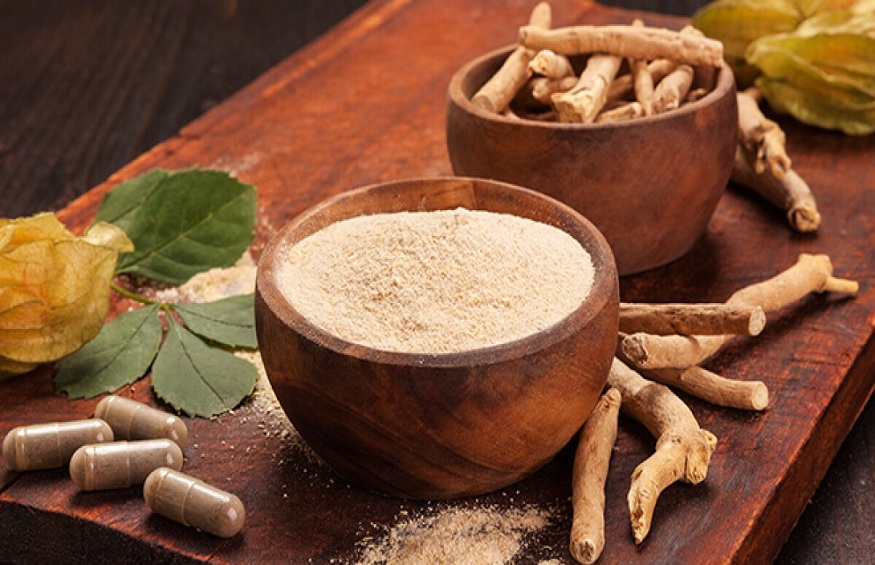Ayurvedic medicine (the system of traditional medicine in India) invites us to discover many plants with often overlooked benefits. Among them, we can cite one of the most renowned, Ashwagandha .
In India, the use of Ashwagandha for its traditionally recognized virtues dates back to 6000 BC. Its tonic and stimulating properties were the most sought after. Applied to the skin, it was reputed to reduce inflammation in the joints, promote the healing of wounds or, in combination with other plants, be used to treat snake bites.
She belongs to the class of Rasayanas. This class of Ayurveda products includes regenerative or tonic “treatments”. It is defined as promoting youthful physical and mental health and increasing happiness.
No wonder its name means “horse strength” in Hindi. It is given to young children as a tonic as well as to the elderly to promote longevity.
What part of the plant do you use?
This plant essentially draws its benefits from its roots or more precisely its rhizomes, the underground stems. These contain powerful active ingredients. But we often simplify by talking about roots…
In India, it is often processed in the form of churna, that is to say a fine sifted powder. This makes it easy to use as it can be mixed with water, ghee (clarified butter) or honey for external or internal use.
Ashwagandha is a hardy shrub native to India. It measures less than a meter and has oval leaves, small white flowers and its fruits are small red berries.
Ashwagandha was originally grown in India . This plant requires dry land to grow well. Even today, it is cultivated in India – where it finds a climate and soil favorable to its development. It is also cultivated in the Mediterranean region or in South Africa at altitudes between 600 and 1200 meters on soils with a slightly alkaline pH. The plant is harvested whole.
What are the active ingredients of Ashwagandha?
The root of Ashwagandha contains many assets belonging to different families. Its composition varies enormously depending on the climate, the place in which it grows but also the time of harvest.
The main constituents of the root, in terms of therapeutic applications, are withanolides (very present in the root, which explains its preferential use). Many other phytochemicals are also present in this part of the plant. It contains a synergy of powerful active ingredients at the origin of its many virtues:
For food use, it is important to favor the root, or root extracts, the use of which is based both on traditional use and on a solid scientific basis in terms of clinical evidence. Traditionally, the leaves are used more for topical treatments (on the skin).
To fully benefit from the virtues of Ashwagandha , it is important that the extracts used as a food supplement contain the full spectrum of the plant’s active ingredients. Indeed, the effectiveness of Ashwagandha is linked to the complex synergy of its active constituents and all must be present in natural proportions, as they are in the root.
The extraction must also be of high quality in order to obtain satisfactory concentrations of active ingredients so that they can be correctly absorbed and integrated by our body. We speak of good bioavailability : the absorbed product is found in the body in quantities conducive to therapeutic activity.
What are the benefits of Ashwagandha?
1. Adaptogenic benefits of Ashwagandha
This is its ability to support the body. It has been shown in studies to increase physical endurance. It has also been shown to act on the mitochondria, which are in a way the “powerhouses” of each cell. Thus, Ashwagandha promotes adequate energy production in each cell.
2. Ashwagandha Anti-Stress Benefits
Ashwagandha reduces the production of a stress messenger called cortisol. In some studies, its anti-stress effects have even been compared to Lorazepam, an anxiolytic drug.
3. Cognitive benefits of Ashwagandha
Recall that Ashwagandha belongs in the Ayurvedic classification to a subgroup of Rasayanas known as Medhyarasayanas (related to mental and intellectual abilities). It is therefore not surprising that this plant has shown a slowing down of the loss of synapses (those junctions between two nerve cells allowing the correct transmission of information) and a reduction in damage to nerve cells.
4. Libido Benefits of Ashwagandha
This natural aphrodisiac is known to improve the libido of both women and men. By soothing the stress that may be responsible for sexual dysfunctions, it helps to resolve erectile disorders and lack of sexual desire. Studies seem to show that Ashwagandha would act on male sexual health through an increase in serum testosterone. It has also shown beneficial effects on spermatogenesis (production and quality of spermatozoa) hence its effects in male fertility disorders.
5. Athletic Performance Benefits of Ashwagandha
An adaptogenic plant par excellence, ashwagandha has an effect on physical capacities as well as on stress. This naturally results in an increase in sports performance. The parameters taken into account during its evaluation were strength, cardiorespiratory condition and recovery capacity.
6. Blood Sugar Regulating Benefits of Ashwagandha
Several studies have shown the role of Ashwagandha in improving the biological parameters of diabetic patients. Thus glycemia, glycosylated hemoglobin (also called HbA1c, parameter allowing to follow the evolution of sugar in the blood over a longer period) or even the insulin level (hormone allowing the regulation of glycemia) have been improved. during the studies carried out.
7. Anti-Inflammatory Benefits of Ashwagandha
Withaferine (molecule contained in Ashwagandha) has demonstrated anti-inflammatory properties. This property is related to two others; it is also antibacterial and immunomodulatory – that is, it modulates immunity preventing a runaway immune system. Thus the immune reaction is perfectly calibrated: neither too much nor too little.

